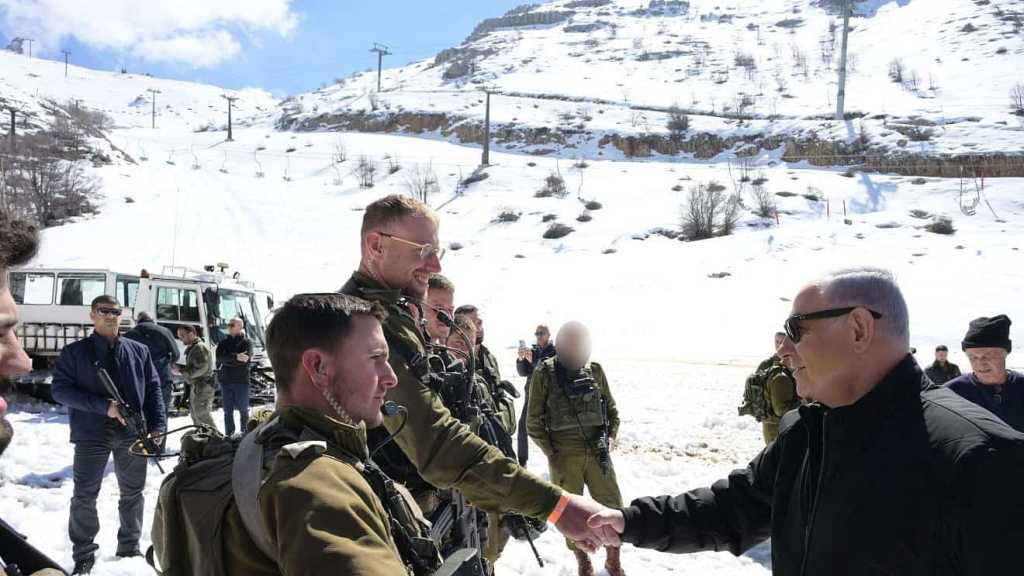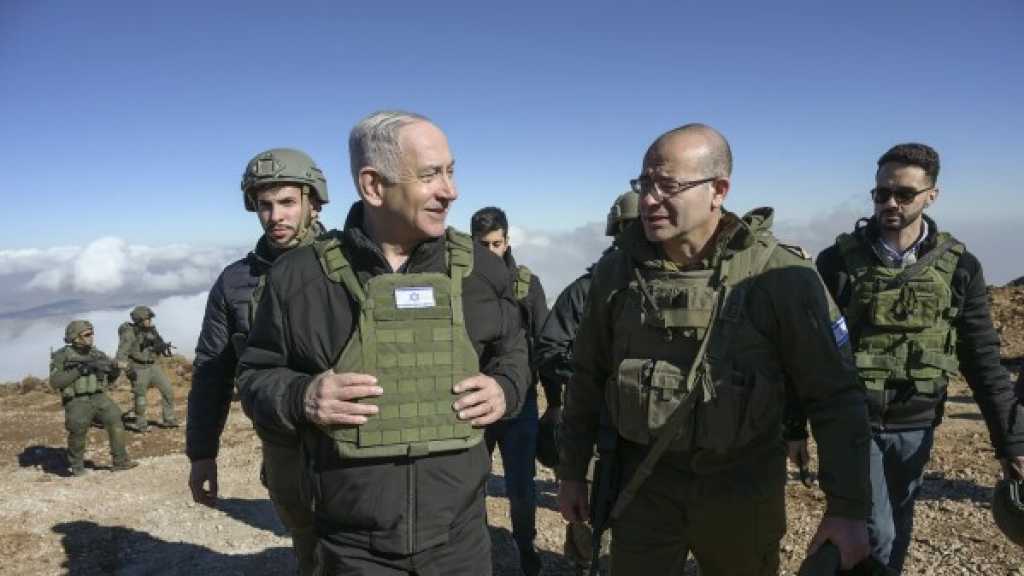
Redefining Boundaries: Netanyahu’s Vision of a Greater ’Israel’ from ‘Mount Hermon’

By Mohamad Hammoud
The concept of "Greater Israel" has long been a contentious and polarizing topic in Middle Eastern geopolitics. Rooted in Zionist ideology, this notion envisions an expanded "Israeli" state encompassing territories beyond its current borders, often including parts of Lebanon, Syria, Jordan, and Egypt. Proponents of these ideas frequently invoke “biblical” references to justify territorial claims, resulting in tensions that continue to reverberate across the region today. This essay explores the historical and ideological underpinnings of "Greater Israel," examining recent "Israeli" military advances into Syria and Gaza as contemporary manifestations of these ambitions.
Historical and Ideological Foundations
The idea of Greater "Israel" is deeply embedded in Zionist thought, tracing back to the early 20th century. The term itself is derived from biblical references to the land promised to the descendants of Abraham, Isaac, and Jacob. Early Zionist leaders, such as Theodor Herzl and David Ben-Gurion, envisioned a Jewish homeland that extended beyond the borders established by the British Mandate for Palestine. This vision was further reinforced by the geopolitical realities of the time, including the need for defensible borders and the desire to secure vital resources.
Recent Military Advances: Syria
The recent incursion into Syria highlights the "Israeli" government's ongoing strategy of territorial expansion. This invasion is not merely an act of military aggression; it symbolizes the historical Zionist pursuit of expanding "Israel's" borders. Prime Minister Benjamin Netanyahu's rhetoric often echoes sentiments that align with this vision. In statements made shortly after the invasion, he reiterated the necessity of maintaining security in regions that fall under "Israeli" control, framing the occupation of the Golan Heights as vital for national defense. He firmly denied any return of this territory to Syrian authority [Smith, "Netanyahu's Vision"]. This perspective aligns with a long-standing belief among certain "Israeli" leaders that the Golan Heights is an indispensable part of "Israel", underscoring the historical connection to the land that many “Israelis” articulate.
Political Push for Annexation
"Israeli" politicians, particularly from right-wing parties, have been vocal in advocating for the annexation of more Palestinian territories adjacent to the Golan Heights. Recently, "Israeli" Minister of “National” Security Itamar Ben-Gvir spoke emphatically about his desire to integrate more territory, pushing for the annexation of areas within the West Bank that he believes should become part of "Israel" [Taylor & Cohen, "The Push for Annexation"]. This annexation drive reflects a broader trend of "Israeli" political rhetoric, where the line between historical legitimacy and contemporary political maneuvering is often blurred. The notion of Greater "Israel" continues to find support among various sectors of "Israeli" society, particularly resonating with the settler movement. This movement has established numerous settlements in the West Bank that have been deemed illegal under international law yet flourish under government patronage.
Religious Endorsements of Greater "Israel"
Moreover, religious figures in "Israel" have lent their support to this vision. Rabbi Zvi Tau, a prominent religious Zionist leader, encourages "Israeli" Jews to settle in all parts of the historic land of "Israel", asserting that divine providence justifies these actions [Miller, "Faith and Politics: Religious Leaders' Role in the Territorial Debate"].Such religious endorsements intertwine with nationalistic sentiments and further entrench the governmental stance that the territory known at times as Greater "Israel" is a birthright that must be reclaimed, regardless of the consequences for Palestinian inhabitants.
Strategic Importance of the Golan Heights
The current situation in the Golan Heights and the rhetoric surrounding it can also be seen as a strategic move to consolidate control over vital water resources and military vantage points. The Golan Heights provides critical geographical advantages that "Israeli" leaders have long cited as essential for “national” security. This strategic element is not new; it echoes the military logic behind "Israel's" territorial conquests during the 1967 Six-Day War. Historical aspirations are continually molded by present-day realities, creating a narrative that often sidelines Palestinian rights and historical claims to the land. The intertwining of historical ambitions and ongoing military aggressions speaks to the increasing normalization of occupation in the "Israeli" political narrative. The recent developments in Syria illustrate how the "Israeli" government uses geopolitical events to reinforce its territorial claims, justifying expansionist policies as necessary for security.
Implications for Peace and Stability
As Netanyahu and his allies articulate a vision rooted in both historical entitlement and contemporary strategy, the implications for peace and stability in the region appear more tenuous than ever. The resonance of Greater "Israel" ambitions within the rhetoric and actions of "Israeli" leadership signifies a deep-seated belief that continues to fuel conflict and diminishes the prospects for a peaceful resolution to the "Israeli"-Palestinian struggle.
Conclusion
The concept of Greater "Israel" remains a potent and controversial element of Zionist ideology. While contemporary "Israeli" leaders may not explicitly endorse the full territorial ambitions of early Zionist thinkers, recent military actions in Syria and Gaza suggest a continued strategic interest in expanding and securing "Israeli" borders. These actions, often justified on grounds of “national” security, reflect deeper historical and ideological motivations. As the region grapples with ongoing conflict and instability, the pursuit of Greater "Israel" poses significant challenges to peace and stability. The continued embrace of this vision by "Israeli" leadership not only complicates diplomatic efforts but also perpetuates cycles of violence and resistance in a region yearning for resolution.
Comments


